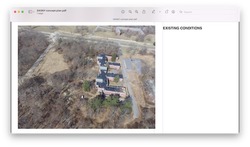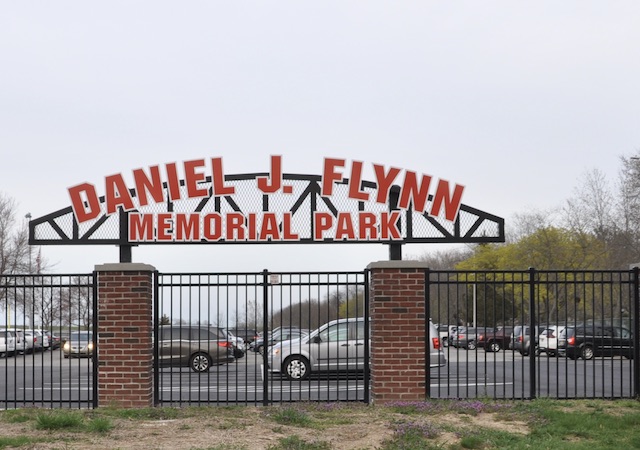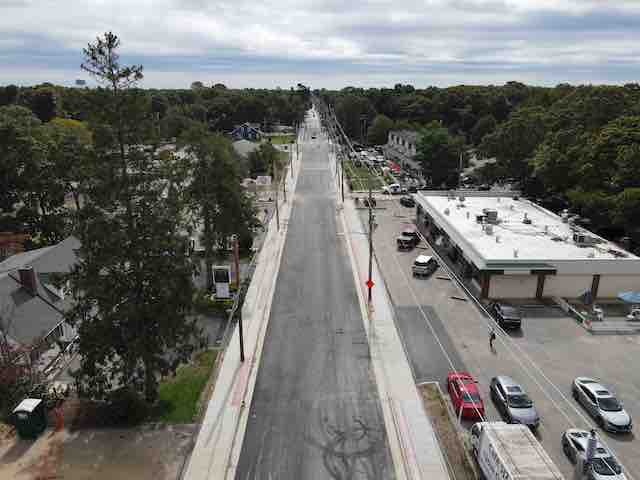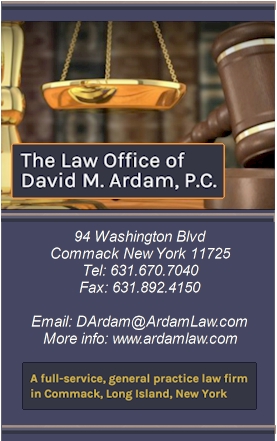Suffolk Closeup - Robert Moses State Park Name Change Introduced In Albany
 Thursday, December 12, 2019 at 1:37AM
Thursday, December 12, 2019 at 1:37AM SUFFOLK CLOSEUP
By Karl Grossman
A bill to change the name of Robert Moses State Park because of the racism of Mr. Moses was introduced last week by State Assemblyman Daniel O’Donnell of Manhattan. An attorney, he grew up in Suffolk, in Commack (and is an older brother of Rosie O’Donnell, the TV personality and author).
His measure declares that “Robert Moses repeatedly abused his power to entrench racial and economic segregation.” Examples cited: when Moses built Jones Beach State Park “he intentionally ordered the overpasses of the connected parkway too low for buses, so that poor people, particularly African-American families, could not access the beach.” He “built most public parks, playgrounds far from Puerto Rican and African-American neighborhoods.” And he “pursued the systematic displacement and segregation of families of color” to build Lincoln Center and “effectively allowed for the discrimination against black veterans and their families in the Stuyvesant Town development.”
“The names of great state parks serve as powerful symbols of which people…celebrate,” the bill says. “The state of New York needs to begin the process of accounting for the historic harm done to communities of color by people like Robert Moses, whose actions still affect many African-American and Hispanic New Yorkers to this day.”
It provides for creation of a commission “to choose a new name” for 875-acre state park that dominates the western portion of Fire Island.
Mr. Moses’ racism has long been described including in a book published this year, “Saving Fire Island From Robert Moses: The Fight For a National Seashore” by Christopher Verga, who teaches Long Island history at Suffolk County Community College.
Bridges on both Moses’ Southern State and Northern State Parkways were built low because, relates Mr. Verga, Mr. Moses didn’t want buses to pass under them taking African-Americans and Latinos from the city to Jones Beach and other parks on Long Island. “He was very biased,” says Mr. Verga.
Robert Caro of East Hampton who wrote “The Power Broker,” the 1974 biography of Mr. Moses, has described him as “the most racist human being I have ever really encountered.”
Opposing the renaming of Robert Moses State Park—for an unusual reason—is writer Rebecca C. Lewis in a column last week with a head: “Robert Moses State Park already has the perfect name for a notoriously segregated region.”
“The temptation to remove the honor for a legendary mid-century builder, whose legacy has been tarnished by revelations of racist views and exclusionary policies, is understandable,” she writes on cityandstateny.com. “But no one better reflects the history of the island—racist, segregated, car-dependent, but blessed with beautiful public beaches—than Robert Moses.”
Racism “is embedded in Long Island’s history, whether we like it or not. It’s built into the very foundation of its suburban neighborhoods, as minorities were steered into communities away from white families with brokers that outright refused to sell to non-white homeseekers. Levittown, the nation’s first true modern suburban neighborhood, was literally built for whites,” she continues. “Long Island today remains incredibly segregated.”
This is true—and, indeed, an exemplary recent investigative report by Newsday of racism on Long Island in how whites and people of color are steered (illegally) to different neighborhoods is current documentation. Still, in running the “Long Island Divided” series, Newsday went out of its way to publish an “acknowledgement” in an editorial that the newspaper “missed a critical chance to lead” in regard to Levittown. It boosted Levittown although blacks, it noted, were “barred…This was no secret. The covenant was in every early lease, in caps: THE TENANT AGREES NOT TO PERMIT THE PREMISES TO BE USED OR OCCUPIED BY ANY PERSON OTHER THAN MEMBERS OF THE CAUCASIAN RACE.”
That was shameful. And the continuing racism on Long Island is outrageous.
In southern states, there has been a reckoning with efforts to end the display of the Confederate flag and statues of Confederate leaders. There needs to be a similar reckoning here when it comes to Mr. Moses, a resident of Babylon (where a bronze statue of him was put up in 2003).
Full disclosure: Mr. Moses got me fired in 1964 from my first job as a reporter because of an article I wrote about civil rights activists being beaten by private security guards on opening day of the New York World’s Fair, which he ran, as they demonstrated against racism in its hiring.
 Karl Grossman is a veteran investigative reporter and columnist, the winner of numerous awards for his work and a member of the L.I. Journalism Hall of Fame. He is a professor of journalism at SUNY/College at Old Westbury and the author of six books.
Karl Grossman is a veteran investigative reporter and columnist, the winner of numerous awards for his work and a member of the L.I. Journalism Hall of Fame. He is a professor of journalism at SUNY/College at Old Westbury and the author of six books.






Reader Comments